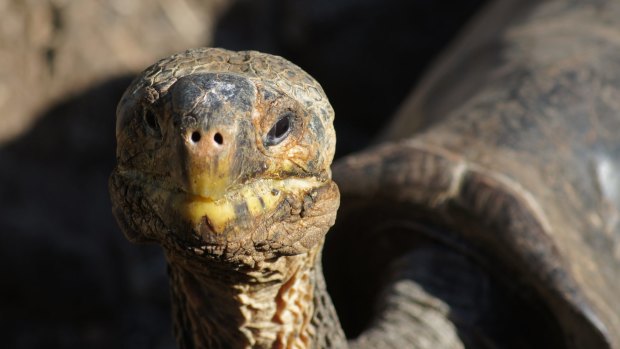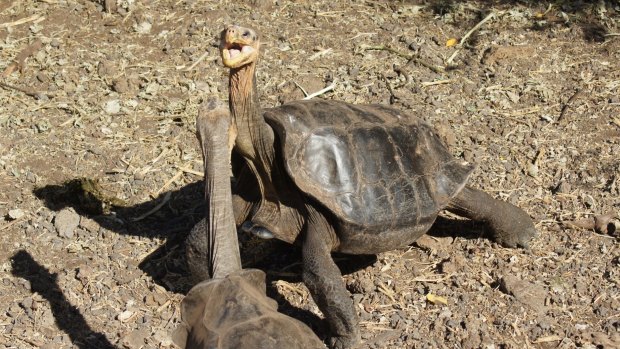This was published 5 years ago
Galapagos Islands giant tortoises stolen from research facility
By Lorna Thornber
Thieves have taken 123 young giant tortoises from a breeding facility in the Galapagos Islands, the environment ministry for the UNESCO-listed Ecuadorian archipelago said.
Prosecutors have opened an investigation into the theft of the animals - which were of the Chelonoidis vicina and Chelonoidis guntheri species - from the centre on Isla Isabela, the ministry said.
"They were all taken at once, 123 in all. It was a robbery," Washington Paredes, a local politician, told the AFP news agency.

A giant tortoise at the Charles Darwin Research Station on Santa Cruz.Credit: Craig Platt
Galapagos tortoises are a huge tourist attraction for Ecuador but also a target for wildlife traffickers.
The country has harsh penalties for environmental crimes. The thieves face up to 10 years in prison if caught.
Paredes said the breeding facility the creatures were stolen from was poorly protected, with no security camera or light sensors.

Two long-necked giant tortoises at the Charles Darwin Research Station.Credit: Craig Platt
"If somebody wants to go in by night and steal, they can."
There are 12 species of Galapagos tortoise, one for each of the major islands in the archipelago, which was made a Unesco World Heritage site in 1979.
Another species (Chelonoidis abingdonii, also known as Pinta) died out in 2012, when the last male tortoise, Lonesome George, died.
The tortoises are among the most iconic species on the islands, which are a protected habitat.
Charles Darwin's observations of tortoises and other species in the Galapagos Islands in 1835 and other findings eventually provided the evidence he needed to develop his theory of evolution by natural selection, which explains how different species can evolve from a common ancestor.
In June 2018, 26 young Galapagos tortoises were returned to the islands after being stolen and taken to Peru.
Sign up for the Traveller newsletter
The latest travel news, tips and inspiration delivered to your inbox. Sign up now.